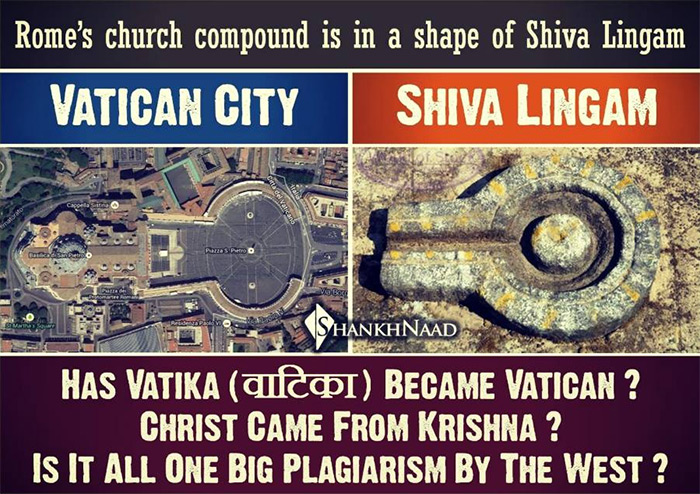Shah Jahan did not have 5000 wives lol.
And for you kind information Mughals have all the money in India, who else was that rich in India? Ever heard of Hiran Minar in Pakistan? Well it was made in the memory of a deer of a mughal king and you should see how big it was and how marvelous it was, if they didn't have that kind of money i wonder how they ventured on to make such things !
1 The famous Hindu treatise on architecture titled Vishwakarma Vastushastra mentions the Tej-Linga amongst the Shivalingas i.e., the stone emblems of Lord Shiva, the Hindu deity. Such a Tej Linga was consecrated in the Taj Mahal, hence the term Taj Mahal alias Tejo Mahalaya.
2 Agra city, in which the Taj Mahal is located, is an ancient centre of Shiva worship. Its orthodox residents have through ages continued the tradition of worshipping at five Shiva shrines before taking the last meal every night especially during the month of Shravan. During the last few centuries the residents of Agra had to be content with worshipping at only four prominent Shiva temples viz., Balkeshwar, Prithvinath, Manakameshwar and Rajarajeshwar. They had lost track of the fifth Shiva deity which their forefathers worshipped. Apparently the fifth was Agreshwar Mahadev Nagnatheshwar i.e., The Lord Great God of Agra, The Deity of the King of Cobras, consecrated in the Tejomahalay alias Tajmahal.
3 .The people who dominate the Agra region are Jats. Their name of Shiva is Tejaji. The Jat special issue of The Illustrated Weekly of India (June 28,1971) mentions that the Jats have the Teja Mandirs i.e., Teja Temples. This is because Teja-Linga is among the several names of the Shiva Lingas. From this it is apparent that the Taj-Mahal is Tejo-Mahalaya, The Great Abode of Tej.
4. Shahjahan’s own court chronicle, the Badshahnama, admits (page 403, vol 1) that a grand mansion of unique splendor, capped with a dome (Imaarat-a-Alishan wa Gumbaze) was taken from the Jaipur Maharaja Jaisigh for Mumtaz’s burial, and the building was known as Raja Mansingh’s palace.
5. The plaque put the archealogy department outside the Tajmahal describes the edifice as a mausoleum built by Shahjahan for his wife Mumtaz Mahal, over 22 years from 1631 to 1653 That plaque is a specimen of historical bungling. Firstly, the plaque sites no authority for its claim. Secondly the lady’s name was Mumtaz-ulZamani and not Mumtazmahal. Thirdly, the period of 22 years is taken from some mumbo jumbo noting by an unreliable French visitor Tavernier, to the exclusion of all muslim versions, which is an absurdity.
6. Prince Aurangzeb’s letter (Refer to Figure I posted earlier) to his father, emperor Shahjahan, is recorded in atleast three chronicles titled Aadaab-e-Alamgiri, Yadgarnama, and the Muruqqa-i-Akbarabadi (edited by Said Ahmed, Agra, 1931, page 43, footnote 2). In that letter Aurangzeb records in 1652 A.D itself that the several buildings in the fancied burial place of Mumtaz were seven storeyed and were so old that they were all leaking, while the dome had developed a crack on the northern side. Aurangzeb, therefore, ordered immediate repairs to the buildings at his own expense while recommending to the emperor that more elaborate repairs be carried out later. This is the proof that during Shahjahan’s reign itself that the Taj complex was so old as to need immediate repairs.
7. The ex-Maharaja of Jaipur retains in his secret personal KapadDwara collection two orders from Shahjahan dated Dec 18, 1633 (bearing modern nos. R.176 and 177) requestioning the Taj building complex. That was so blatant a usurpation that the then ruler of Jaipur was ashamed to make the document public.
8. The Rajasthan State archives at Bikaner preserve three other firmans addressed by Shahjahan to the Jaipur’s ruler Jaisingh ordering the latter to supply marble (for Mumtaz’s grave and koranic grafts) from his Makranna quarris, and stone cutters. Jaisingh was apparently so enraged at the blatant seizure of the Tajmahal that he refused to oblige Shahjahan by providing marble for grafting koranic engravings and fake centotaphs for further desecration of the Tajmahal. Jaisingh looked at Shahjahan’s demand for marble and stone cutters, as an insult added to injury. Therefore, he refused to send any marble and instead detained the stone cutters in his protective custody.
9. The three firmans demanding marble were sent to Jaisingh within about two years of Mumtaz’s death. Had Shahjahan really built the Tajmahal over a period of 22 years, the marble would have needed only after 15 or 20 years not immediately after Mumtaz’s death.
10. Moreover, the three mention neither the Tajmahal, nor Mumtaz, nor the burial. The cost and the quantity of the stone also are not mentioned. This proves that an insignificant quantity of marble was needed just for some supercial tinkering and tampering with the Tajmahal. Even otherwise Shahjahan could never hope to build a fabulous Tajmahal by abject dependence for marble on a non cooperative Jaisingh.
11. Tavernier, a French jeweller has recorded in his travel memoirs that Shahjahan purposely buried Mumtaz near the Taz-i-Makan (i.e.,`The Taj building’) where foriegners used to come as they do even today so that the world may admire. He also adds that the cost of the scaffolding was more than that of the entire work. The work that Shahjahan commissioned in the Tejomahalaya Shiva temple was plundering at the costly fixtures inside it, uprooting the Shiva idols, planting the centotaphs in their place on two stories, inscribing the koran along the arches and walling up six of the seven stories of the Taj. It was this plunder, desecrating and plunderring of the rooms which took 22 years.
12. Peter Mundy, an English visitor to Agra recorded in 1632 (within only a year of Mumtaz’s death) that `the places of note in and around Agra, included Taj-e-Mahal’s tomb, gardens and bazaars’. He, therefore, confirms that that the Tajmahal had been a noteworthy building even before Shahjahan.
13 De Laet, a Dutch official has listed Mansingh’s palace about a mile from Agra fort, as an outstanding building of pre shahjahan’s time. Shahjahan’s court chronicle, the Badshahnama records, Mumtaz’s burial in the same Mansingh’s palace.
14 . Bernier, a contemporary French visitor has noted that non muslim’s were barred entry into the basement (at the time when Shahjahan requisitioned Mansingh’s palace) which contained a dazzling light. Obviously, he reffered to the silver doors, gold railing, the gem studded lattice and strings of pearl hanging over Shiva’s idol. Shahjahan comandeered the building to grab all the wealth, making Mumtaz’s death a convineant pretext.
15 . Johan Albert Mandelslo, who describes life in agra in 1638 (only 7 years after mumtaz’s death) in detail (in his Voyages and Travels to West-Indies, published by John Starkey and John Basset, London), makes no mention of the Tajmahal being under constuction though it is commonly erringly asserted or assumed that the Taj was being built from 1631 to 1653.
I believe this mystery should be resolve once for all by repeating Babri Masjid style demolition of Taj Mahal just to find out the ancient ruins of Hindu temple. I stand by my bhagwan fearing RSS hinduvati neighbors and their grave concerns regarding Taj.
Heard of Somnath temple-
Maitraka Kings of Vallabhi in Gujarat renovated the Somnath temple in 649 AD..
In 725AD Junayad, the Arab governor of Sind, destroyed this temple ( 1)
King Nagabhata II of the Gurjara Pratihara dynasty re-built the temple in 815 AD in a large lavish manner with red sandstone
In 1026AD, Mahmud Ghazni destroyed Somnath temple.(2)
It was rebuilt by Solanki King Bhima of Ahnilwara Gujarat and Parmara King Bhoja of Malwa.
During his campaign, Mahmud was challenged by 90 year old Ghogha Rana 90, sacrificed himself and the soldiers of his clan fighting against this Islamic warrior.
The Somnath temple was raided by Alaf Khan the general by Sultan Allauddin Khilji in 1300 A.D (3).
Mahipala Deva of the Chudasama dynasty of Saurashtra renovated it.
In 1375 AD, the temple was again destroyed by Muzaffar Shah I (4)
The temple was again reconstructed, by Mahipal, the king of Junagadh.
In 1451, the temple was once again destroyed by Mahmud Begda, the Sultan of Gujarat. (5)
Later, the Marathas rulers of Pune, Nagpur, Kolhapur and Indore came together and rebuilt the temple.
The last destruction of Somnath was by the last Mughal Emperor Aurangzeb in 1706 AD,( 6) just a year before his death.
Aurangzeb built a mosque on the site of the Somnath temple, using some columns from the temple, whose Hindu sculptural motifs remained visible.
Somnath Temple was rebuilt with perseverance each time after it was destroyed. In the year 1783 AD, Queen Ahilyabhai Holkar built a new temple nearby as Somnath temple was converted into a mosque.

























